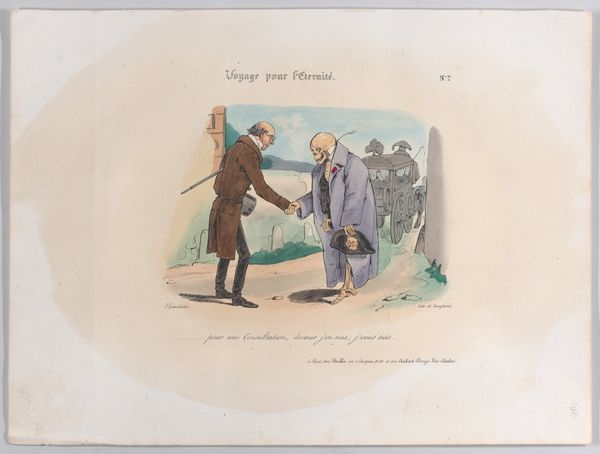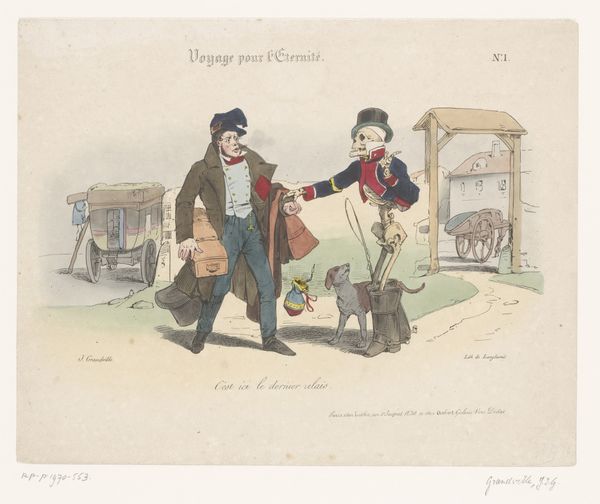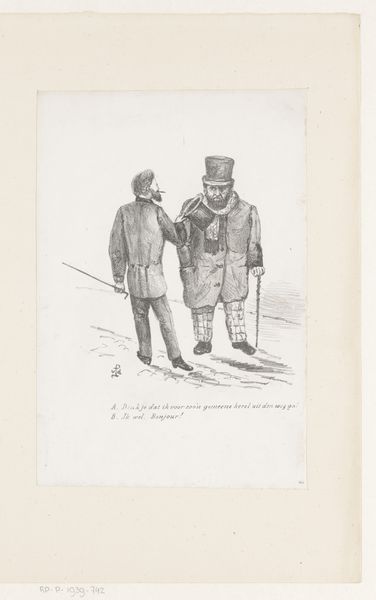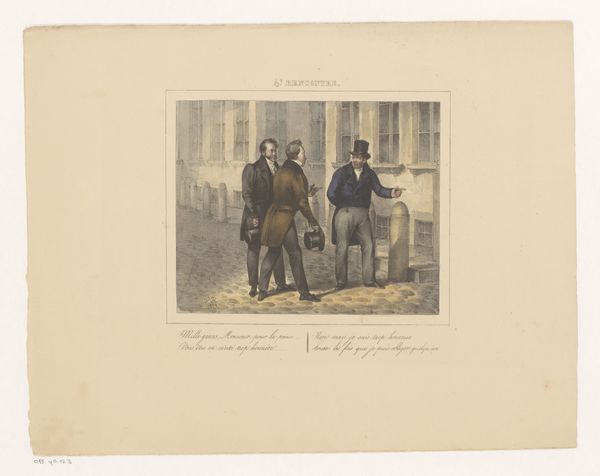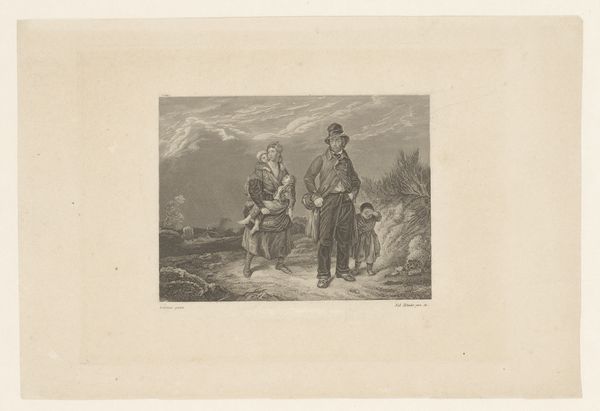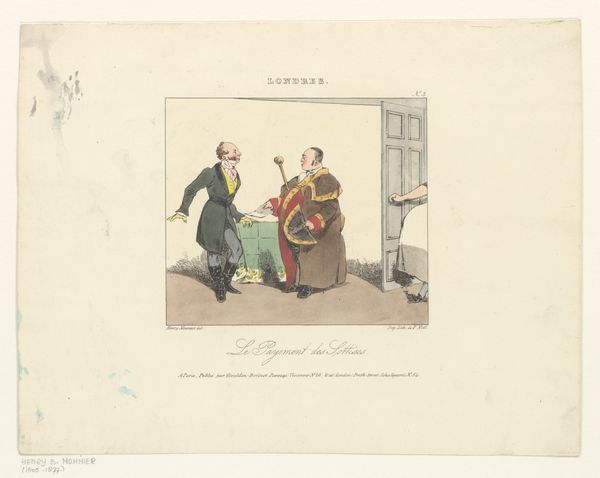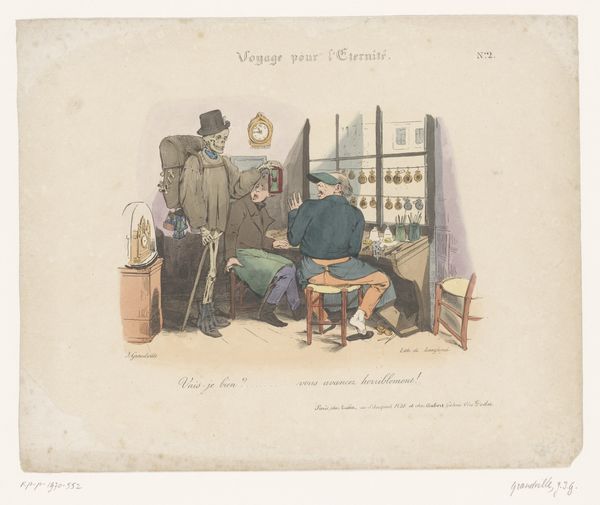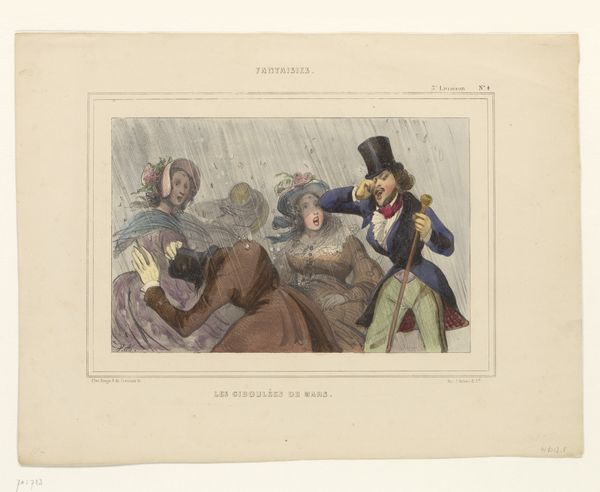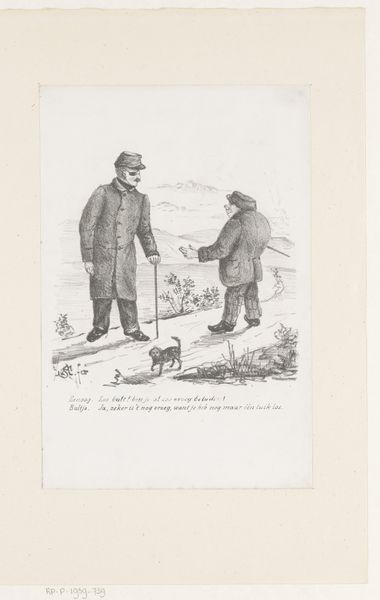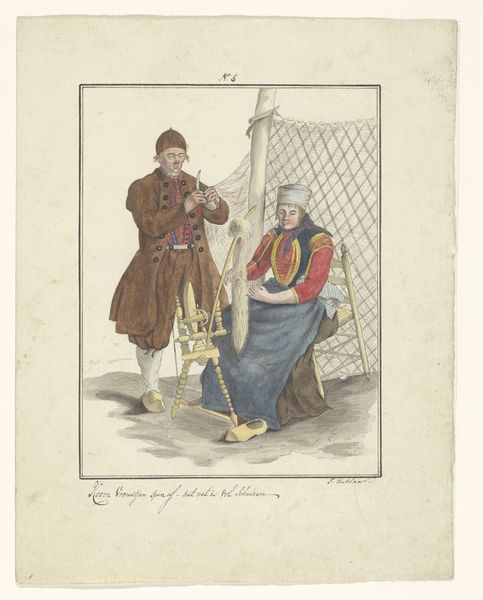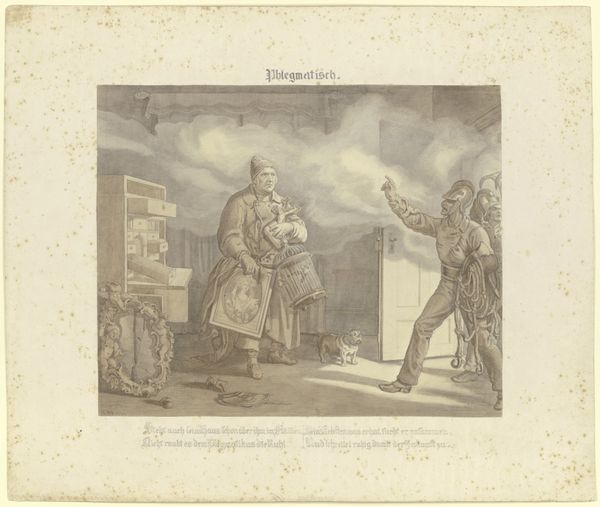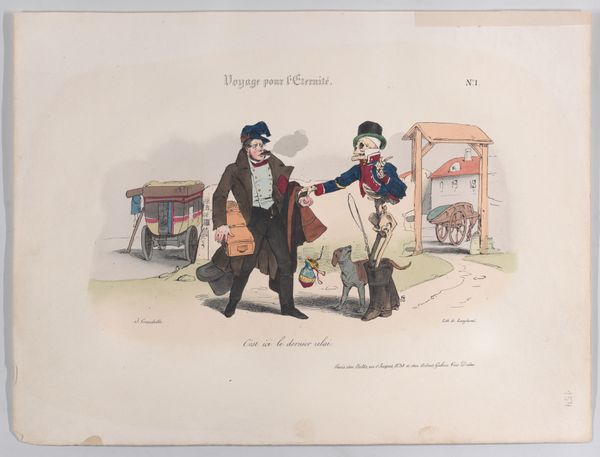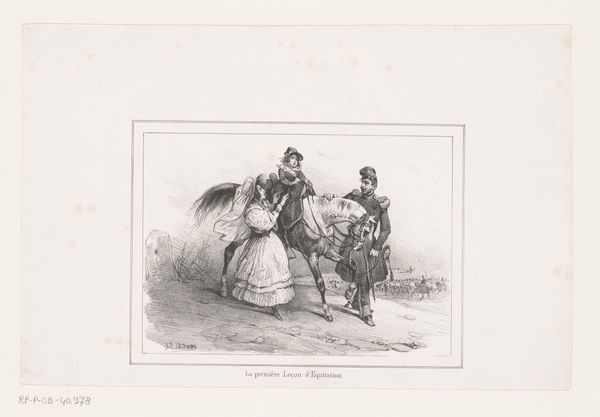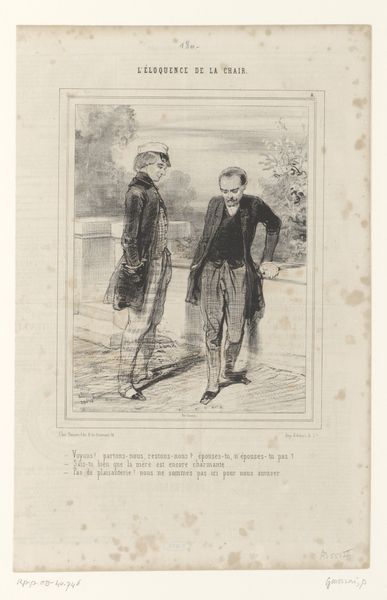
drawing, watercolor
#
drawing
#
caricature
#
figuration
#
watercolor
#
romanticism
#
watercolour illustration
#
history-painting
#
cartoon carciture
Dimensions: height 211 mm, width 265 mm
Copyright: Rijks Museum: Open Domain
Editor: This watercolour illustration, “Dokter schudt handen met de Dood” or “The Doctor Shakes Hands with Death,” by Jean Ignace Isidore Gérard Grandville, made in 1830, is pretty unsettling. It looks like a caricature, but what strikes me is the handshake - it's almost casual, which is really disturbing given the subject matter. What's your take on this piece? Curator: From a materialist perspective, it's interesting to consider the context in which this watercolor was produced. In 1830, Romanticism dominated the art world and the rise of industrial production shifted understandings of art and craft. Given that, how do you interpret Grandville's choice of materials and the process of making this drawing? Editor: I see your point. Watercolor is a very accessible and kind of quick way to make art. That may speak to how the artist conceptualized labor versus, like, producing an oil painting at the time? Curator: Exactly! The printmaking process made it even more widely accessible, multiplying its potential impact on the public. This piece makes use of the technologies and markets of its day. I wonder what statement Grandville was trying to make. Notice the skull and crossbones on Death’s hat - do you know what they represented during the Romantic period in France? Editor: That's a good point. Those were revolutionary symbols at the time, right? I hadn't really considered it. Curator: Precisely. This piece, made with widely-available methods, also critiques power structures. Now that we understand the artistic context and symbolism, can we better comprehend the intent behind the illustration? Editor: Yeah, it really makes me reconsider the level of the artist’s intention and how deeply entangled art is with historical context. The way we consume artwork is affected by this social lens too. Thanks for sharing these perspectives.
Comments
No comments
Be the first to comment and join the conversation on the ultimate creative platform.
